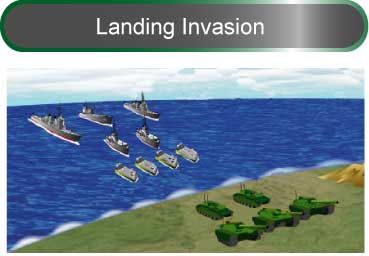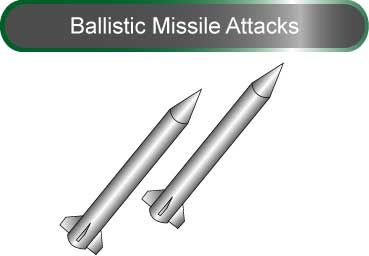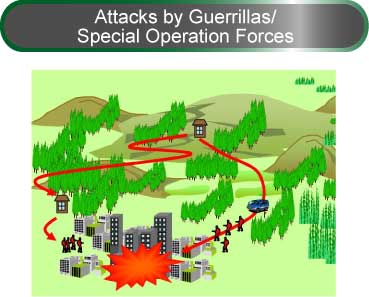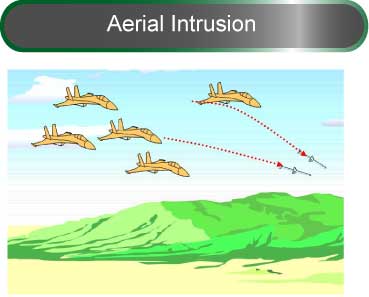Characteristics of Armed Attack Situations
It is impossible to completely define armed attack situations because they
may differ due to the means, size, or patterns of the armed attacks. Under the
Basic Guidelines for Protection of the People, the following four types of armed
attack situations are assumed in order to clarify points to remember for taking
measures to protect the people.

- In the case of landing by ship, coastal areas are likely to become the initial target of invasion.
- In the case of landing by aircraft, airports near coastal areas are likely to be targeted for attack.
- The areas where civil protection measures should be implemented are likely to be extensive and the duration of the measures is likely to be relatively long.
|

- At the stage of missile launch, it is extremely difficult to specify the attack targets. Such missiles land in a short period of time.
- It is difficult to specify the kind of warheads (conventional warheads or NBC warheads) before they land. The damage inflicted differs widely depending on the kind of warhead.
|

- May cause damage suddenly.
- The damage will generally be limited to a relatively narrow area. But, depending on the kind of facilities targeted (life-related
facilities, such as a nuclear power establishment), it may cause heavy damage.
- NBC weapons and dirty bombs may possibly be used.
|

- Compared with the case of ballistic missile attacks, it is relatively easy to detect the signs of attack but difficult to specify the attack target in advance.
- Main facilities in cities and lifeline infrastructures may possibly become targets.
|
|

